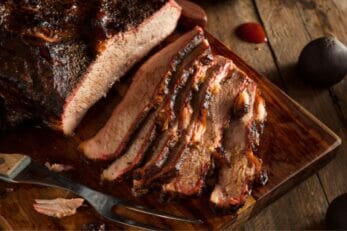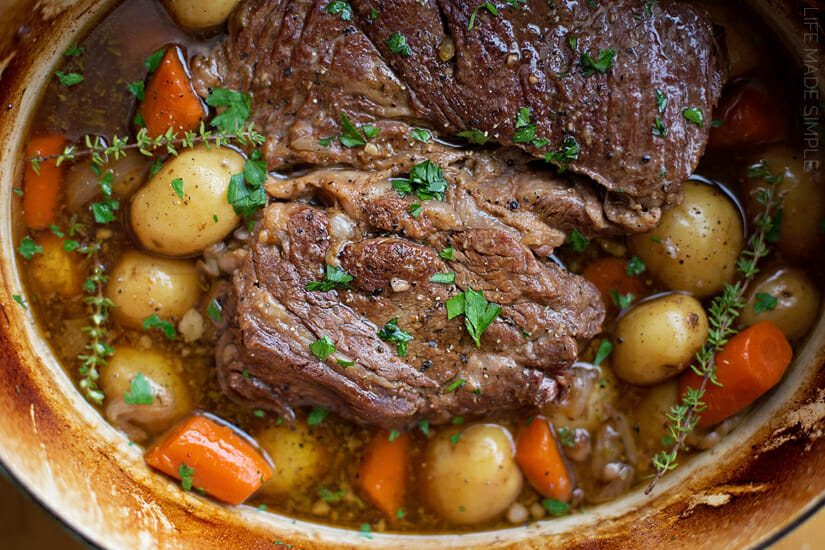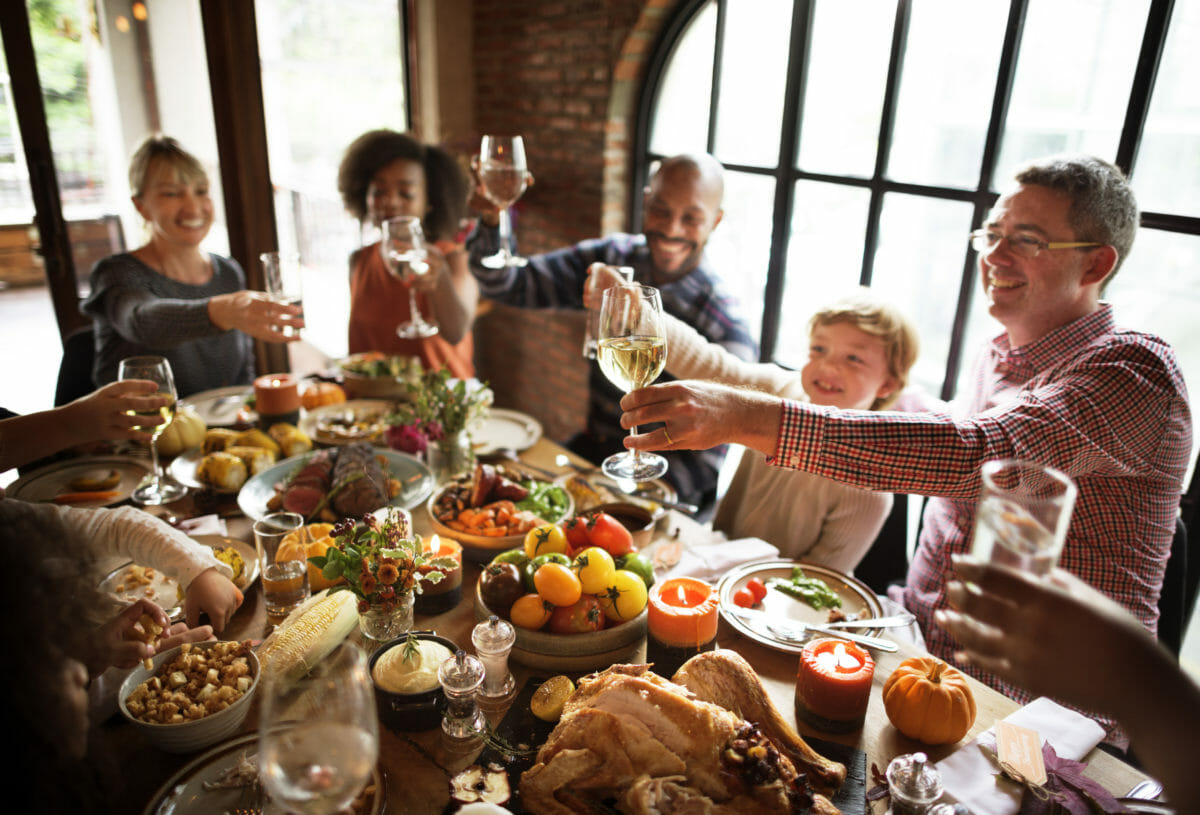 When it comes to cooking meat, knowing the character of the particular cut and how to cook it are the keys to releasing its full flavor and potential. There’s something about the word “braising” that brings up images of tender roasts brimming with home-cooked warmth and goodness perfect for our cooler weather this time of year. And that’s exactly what braising does for those less-tender (and more inexpensive) cuts of meat, like stew meat, pot roast, brisket, pork butt, or short ribs. Download a copy of our guide to beef cuts for braising and oven roasting here for easy reference.
When it comes to cooking meat, knowing the character of the particular cut and how to cook it are the keys to releasing its full flavor and potential. There’s something about the word “braising” that brings up images of tender roasts brimming with home-cooked warmth and goodness perfect for our cooler weather this time of year. And that’s exactly what braising does for those less-tender (and more inexpensive) cuts of meat, like stew meat, pot roast, brisket, pork butt, or short ribs. Download a copy of our guide to beef cuts for braising and oven roasting here for easy reference.
But for many cooks, the term also carries some mystery. Just what is braising, and how can you achieve that amazing fork-tender quality in a less-forgiving roast? We’ve got the answers for you along with some great resources and recipes to make braising a regular and delicious part of your cooking arsenal.
Braising essentially is a method that uses low heat and extended cooking time and liquid to slowly tenderize meat that is less suited to quicker cooking methods such as searing. The extended cooking time will break down cuts that contain higher amounts of fat, sinew, and connective tissue such as you find in the more muscled areas of the cow. As the meat cooks, it releases amazing flavor into the cooking liquid, making braising the perfect vehicle for savory sauces and vegetables.
Any cooking source that provides low and consistent heat will successfully braise meat.
Various braising recipes will use the stovetop, a slow cooker, or the oven. Common ingredient accompaniments are vegetables, fresh herbs, and wine.
The steps to successful braising are simple. Start early in the day. Meat is first patted dry for more even browning and seasoned, either with salt and pepper or a seasoning mix or rub. Typically, braising recipes call for first browning the beef on all sides. Next you’ll remove the meat and add any vegetables, or aromatics, sauté them, then “deglaze” the pan by adding liquid, such as broth, wine, or liquid, scraping the delicious brown bits up from the bottom. Finally, you’ll return the beef, add any more liquid the recipe calls for, adjust the heat, and cover with a tight-fitting lid. Then, let the slow and low heat do the work. Depending on the recipe, cooking time can range from three to six hours or so. For a more detailed breakdown of the process, check out this Braising Basics guide from Beef. It’s What for Dinner. And, if you want to see the braising process visually, see this short video.
To get you started, here are a couple of delicious braising recipes:
Braised Chuck Roast with Roasted Red Pepper Sauce
Butcher Boy’s Signature Brisket Recipe
Chef Anne Burrell’s Braised Short Ribs
If you enjoy exploring your creative cooking side, these braising time guidelines will give you the basic cooking requirements to get you started on your own signature braising recipe.
One more note – a meat thermometer is essential in assessing whether your meat or poultry is sufficiently cooked and should be part of your cooking routine. Learn more about the different types of cooking thermometers here or ask about them in-store. Butcher Boy carries a selection of meat thermometers for varying uses and our butchers can help you choose the right cut and size of beef for your needs.

 When it comes to cooking meat, knowing the character of the particular cut and how to cook it are the keys to releasing its full flavor and potential. There’s something about the word “braising” that brings up images of tender roasts brimming with home-cooked warmth and goodness perfect for our cooler weather this time of year. And that’s exactly what braising does for those less-tender (and more inexpensive) cuts of meat, like stew meat, pot roast, brisket, pork butt, or short ribs.
When it comes to cooking meat, knowing the character of the particular cut and how to cook it are the keys to releasing its full flavor and potential. There’s something about the word “braising” that brings up images of tender roasts brimming with home-cooked warmth and goodness perfect for our cooler weather this time of year. And that’s exactly what braising does for those less-tender (and more inexpensive) cuts of meat, like stew meat, pot roast, brisket, pork butt, or short ribs. 

